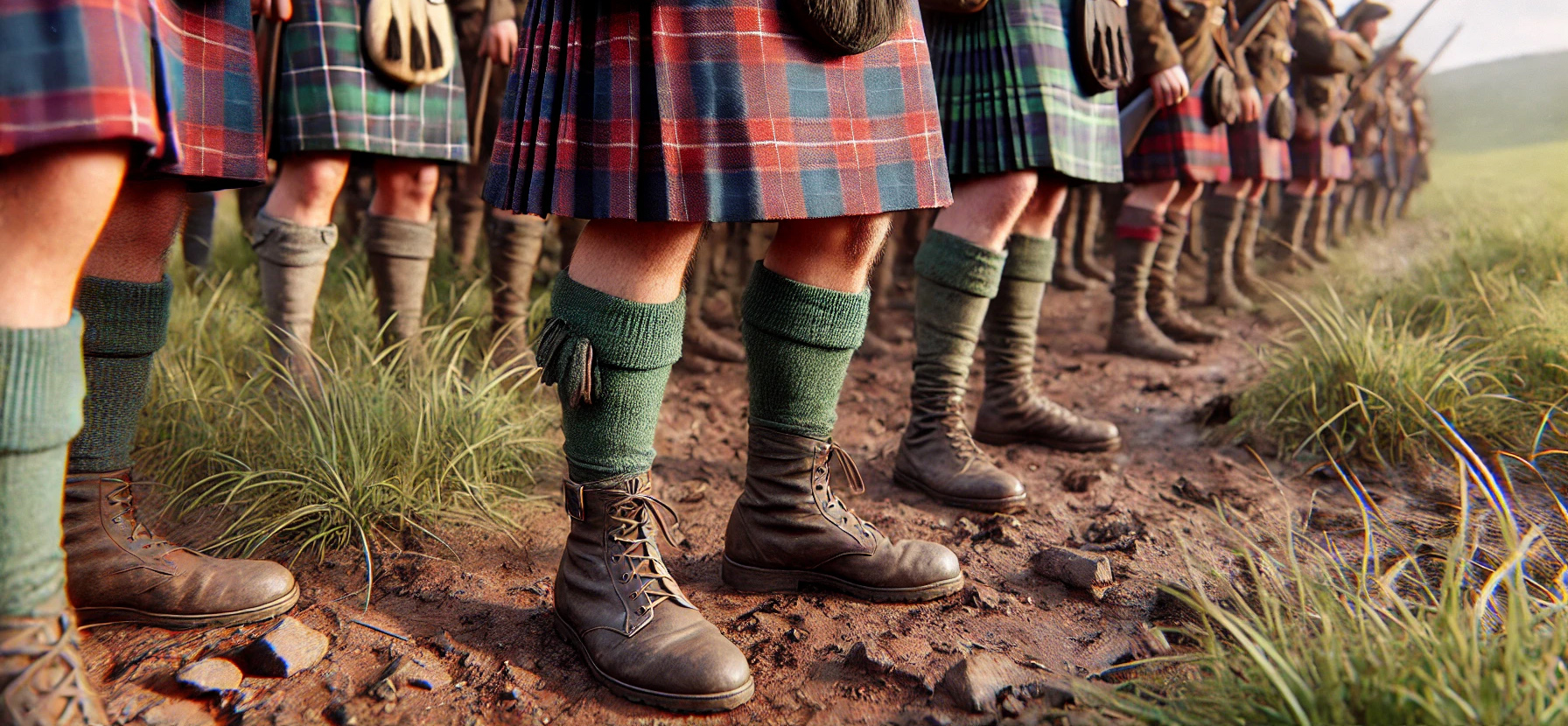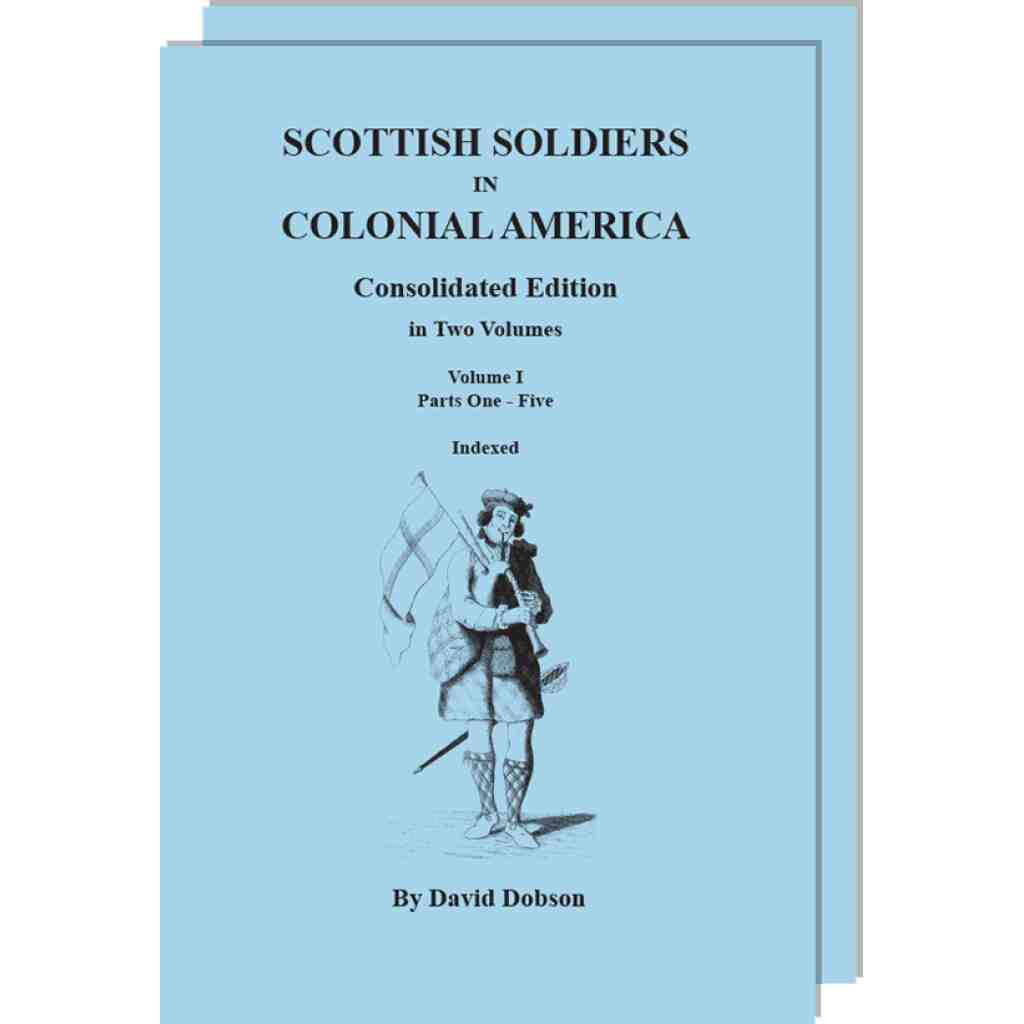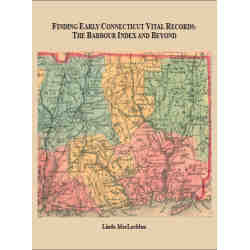
Between 1997 and 2024, Genealogical.com published the nine-volume series, Scottish Soldiers in Colonial America, by Dr. David Dobson. We are delighted to present those books in a new, fully indexed, consolidated edition. This new edition identifies over 10,000 Scottish soldiers who served in the Americas. Dr. Dobson has attached a detailed list of Scottish regiments that were stationed in colonial America. We also encourage readers to consult the rich Appendix, for it contains all the “American” entries from the author’s 2021 book, Scottish Soldiers in Europe and America, 1600-1700, which was published separately from the colonial America series. This new edition is available as a complete set, or by individual volume.
In the mid-eighteenth century the British Government began to raise Scottish Highland regiments, such as Fraser’s Highlanders, to fight in North America. Many Scottish soldiers served in the Americas during the French and Indian War, and they chose to settle there when the British government allocated land to them in the aftermath. On the outbreak of the American Revolution, former soldiers, who had received land grants in America, were recalled for duty by the British Government. Following the Treaty of Paris in 1783, large numbers of Scottish soldiers from former Loyalist units and from the regular British Army regiments were settled in what would become Nova Scotia, Prince Edward Island, New Brunswick, Ontario, and Quebec. The practice of settling former soldiers in the Canadian provinces continued into the nineteenth century.
As the following examples from Volume II of the consolidation illustrate, Scottish soldiers who served in the Americas moved around quite a bit. This is so partly because they served in the British army and, after 1783 in any case, mostly preferred to remain loyal to Great Britain. For researchers hoping to find their immigrant ancestors, this means working with records found in more than country. On the other hand, Dr. Dobson’s findings will help genealogists pin down their Scots forebears to a specific time and place. See for yourself.
Cochrane, Captain John, Commander of the Castle of William and Mary in New Hampshire, was ordered to dismantle the said castle and go to Boston, a memorial dated New York, on 19 November 1779. [Source]
Gordon, Alexander, settled in Norfolk, Virginia, as a surgeon and druggist in 1761. Colonel of the Norfolk Militia he fought at the Battle of Great Bridge where he was captured, later he was exchanged and moved to New York where he rejoined the Army and fought at Head of the Elk and at Brandywine in 1777, he moved to England in 1779 but returned with Lord Dunmore in 1782, in London in 1784 [Source]
MacNab, Duncan, settled in Anson County, North Carolina, a Loyalist soldier, fought at Moore’s Creek Bridge in 1776, and at the Siege of Savannah, moved via East Florida, to Halifax, Nova Scotia, then to London in 1784. (Source]
Robertson, Captain James, of the 77th (Montgomery’s Highlanders] Regiment, from Greenock to Halifax, Nova Scotia, in 1758, with a detachment of the 77th Regiment, escorted Christian Conestoga Indians from Lancaster, Pennsylvania to New York in 1764, to protect from the Paxton Boys, served in America from 1756 until 1783, Barrack Master General from 1756 until 1776, was granted 10,000 acres in East Florida in 1766, Governor of New York from 1779 until 1783 [Source]
Thomson, Alexander, prisoner of war captured at the Siege of Worcester on 2 September 1651, was transported via London on the John and Sarah of London to Boston in December 1651, landed there in February 1652, [possibly an indentured servant at Lynn ironworks.] [Source]




